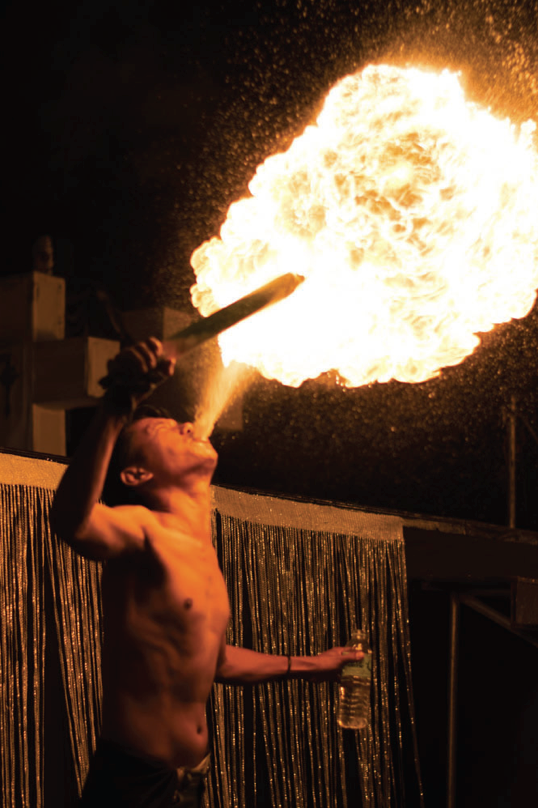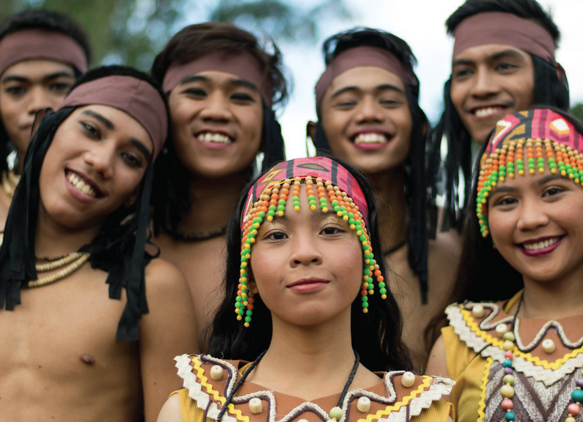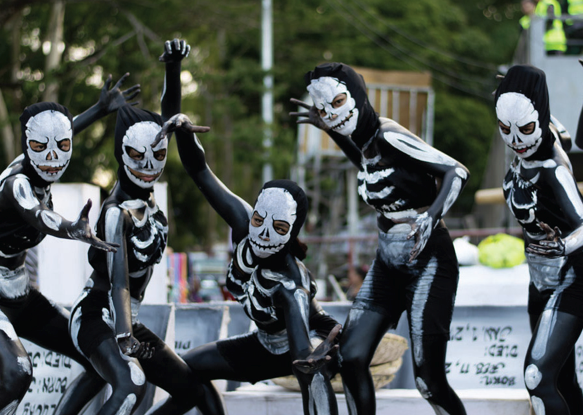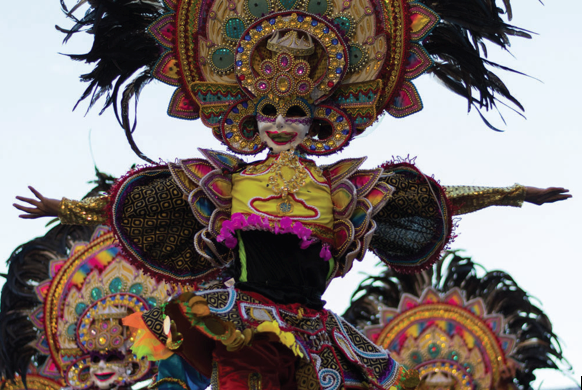A closer look at the Panaad Festival, and Negros Occidental’s industrial evolution
It was already well into the night, and without the artificial glow of the stage lights, the darkness that April evening became more complete. I was standing just at arm’s length from the raised dais, noticing belatedly that I was holding my breath.
“Just one more shot,” I prayed.
My camera’s battery was eking out its final juice and I’d forgotten to bring my spare. What bad timing, I chided myself, especially now that the town of La Castillana was performing.
This was one of the best, I’ve been told. Bailes de Luces – the Dancing Lights. In the Panaad Stadium, along with thousands of Negrosanons, I looked on with awe. It was like watching a spectacle of multicolored and tamed lightning. Slightly baffling, but magnificent. The brilliant neon streaks cut across the thick new summer evening. I was almost glad my camera had died – enabling me to give it my full attention.

A confluence of celebrations
It wasn’t just La Castillana performing that night. A total of 23 contingents took to the stage, each showcasing their respective festivals. It’s been said that if you want to experience a bit of everything of what Negrense culture has in store, come during the Panaad Festival.
And it wasn’t just dancing and festivities that are featured during the fortnightly celebration. Panaad is also a time for locales to showcase their treasured products and crafts.
Surrounding the Panaad Stadium are structures christened as “Destination Pavilions.” What used to be temporary stalls made of nipa and bamboo had evolved into permanent buildings that speak of each of the town’s unique characteristics. And these are no simple structures. One features an indoor waterfall. Another was made to look like an aquarium. There’s also one that is a full-on replica of a Spanish-era mansion. See, it’s not really reaching when you assume that a pavilion reflects the actual situation of the community it was representing. A glimpse, if you will.
Indeed, it was like a microcosm, and going around this exhibit-cum-trade fair, I was pleasantly surprised at how diverse the province was.
Industrial evolution
Like many Filipinos, I have come to know Negros Occidental as the “Sugar Bowl of the Philippines.” I had a definite image of it in my mind: acres and acres of sugar plantations, the air perpetually smelling like candy, and food that are decidedly sweet.
Well, I wasn’t completely wrong. The province remains the country’s biggest sugar producer, but unlike before, when sugar production was its sole industry, Negros Occidental had branched out over the years.
Since the sugar crisis of the 70s and 80s, the province implemented a powerful drive towards agricultural diversification. And from what I’d seen, that campaign has been largely successful. The people no longer rely on the sugar industry alone. There are countless others to choose from, all equally profitable, and boosted by the local government: rice, corn, cattle, nuts, and even small community-based industries like pandan-weaving and silk production.
The province is also doing excellently in the tourism department. Tourism offered here is ultra varied. There’s the cultural kind, which involves the many heritage houses scattered across the province. Farm tourism is also rising, with a number of organic farms being buoyed by the local government. And then, of course, there are your mainstay beaches and hiking spots.
Amidst these offerings, it’s delightful to know that development and promotion of destinations is not concentrated, having the intention of spreading the impact – both human and economic. Carrying capacities – a limit on the number of tourists per day – too, are considered and implemented. Its tourism path echoes so much of my own ideals that I couldn’t help but fall in love with the place.
It’s no surprise then the province is also touted as one of the most eco-conscious in the country. For one, it is home to the Danjugan Marine Sanctuary, widely praised for its sustainable and conservation practices, offering a quality-over-quantity experience. Its coastal municipalities are actively learning about sustainability, with the city of Sipalay – where most of the beaches are found – taking the lead. Inspections are regularly done among businesses to ensure environmental compliance. Solar panels are everywhere here. Single-use plastics are slowly being removed from the picture.
A promise fulfilled
In just a few decades, the province has transformed from being one of the poorest in the Philippines into one of the most progressive. And the progress here, one should note, isn’t limited to economic stats. The growth is inclusive; trying its best to be balanced. Sustainable. Fool-proof.
Lights are now dancing here. Smiles are enduring. Heck, even the dead seemed to be partying. The sweetness is still there of course, but it’s no longer the only flavor.

There’s a lot to be said, too, of its people. Refusing to be defined by the past, tragedy became something worthy of celebration. The Panaad Festival, for example, was birthed by strength of character – the term “panaad” being Hiligaynon for “promise.” And that promise? It was realized because of the same resolve that engendered it.


Now back at the stadium, I let myself be taken by the dazzling lights. We were engulfed by darkness, sure, but I noticed the dancers did not falter. They pushed on; the lights blazing through the night. Like a beacon of hope. Like a promise unbroken.
The Panaad Festival is celebrated every April. Its festivities are usually spread out over a two-week period, with most of the activities held at the Panaad Park and Stadium in Bacolod City.
For more information, contact the Provincial Tourism Office at tourism_negocc@yahoo.com.
By CELINE MURILLO






